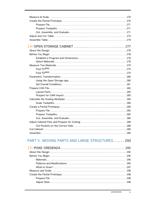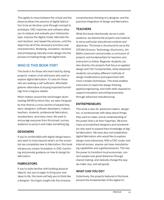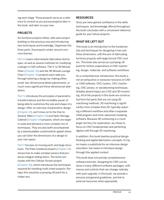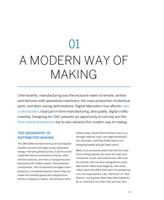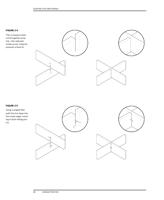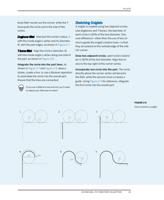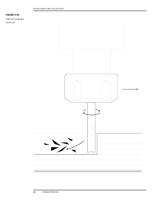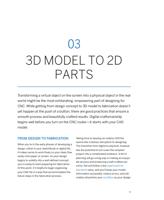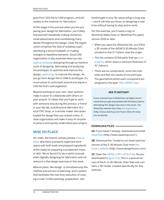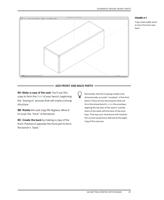
EIGHT BASIC CNC JOINT CONDITIONS
FIGURE 2-14
Different fillets trans-
form the same slot
DRAWING SMOOTH MOTION
As we worked the sniglet into our first few furni-
ture designs, we began to see our virtual CAD
lines not as mere outlines of a furniture part,
but as the movement of the end mill itself. This
may seem like a subtle distinction, but it’s a key
concept in designing for CNC. Profiles are not
just shapes, they are machine toolpaths.
Figure 2-14 shows four versions of a slot with
different fillet solutions: a plain corner and the
dogbone, T-bone, and sniglet shapes that effec-
tively clear the slot’s inside corners.
The sniglet’s continuous, radiused toolpath
allows the CNC tool to preserve its momentum
as it turns each corner, giving it an advantage
over dogbone and T-bone fillets. As you can see
in Figure 2-14, the dogbone and T-bone fillet
toolpaths double back on themselves, causing
the machine to halt at the edge of the fillet and
make sharp moves to return to the part, dis-
rupting the smooth motion and speed of the
cut.
Sniglets also reduce any possible disturbance
to the part during abrupt 90-degree turns of
the tool, while preserving the cut speed. By
smoothly incorporating corner removal into the
toolpath, the simple sniglet ends up saving
time and increasing efficiency, while ultimately
expressing the movement of the end mill in
every joinery detail.
A successful CNC design is a direct result of
understanding that the lines in your CAD pro-
gram are as much about the path of the mill as
they are about the edge of the part. It’s not a
coincidence that the expression of a tool’s role
in the fabrication of a thing should also yield
efficiencies for the tool itself. The sniglet
became the basic element that underpinned
the entire range of AtFAB furniture. The sniglet
aggregates into joinery, joinery forms assem-
blies, and assemblies create structures, which
ultimately combine to accommodate functions.
It is the little that leads to much.
EIGHT BASIC CNC JOINT
CONDITIONS
An online search for “CNC joints” returns a
seemingly infinite number of joinery styles.
There are endless solutions for connecting
wood-to-wood at every conceivable angle, each
employing varying degrees of complexity. While
it’s easy to get excited by the ingenuity in all
02/END MILL TO FURNITURE COLLECTION
47













